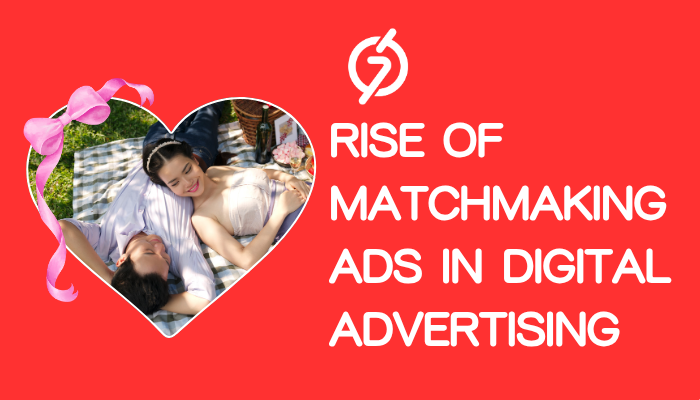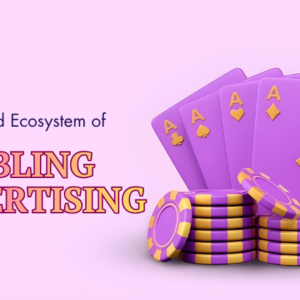The online dating landscape has transformed dramatically in the last few years. What used to be an occasional swipe or casual chat is now a billion-dollar industry powered by intelligent ad technologies. In 2024 alone, global spending on Matchmaking Ads rose by more than 35%, as advertisers realised the power of personalised targeting to connect singles in more meaningful ways. For brands in the dating niche, this isn’t just a love story—it’s an advertising revolution.

The Dating Boom That Advertisers Can’t Ignore
Today’s singles are digital natives. They aren’t just looking for a partner—they’re looking for relevance, connection, and trust. That’s where online advertising steps in. According to Statista, over 370 million people worldwide now use online dating platforms. Each of them represents a micro-segment, a unique audience with their own preferences, location, age group, and lifestyle choices.
Advertisers saw this as a goldmine. Instead of promoting a generic dating brand, Online Matchmaking Ads now use advanced targeting to match people based on shared interests, compatibility scores, and intent. This transformation didn’t happen overnight—it’s the result of ad platforms evolving to meet both user expectations and advertiser goals.
Getting Real Connections, Not Just Clicks
Advertisers in the matchmaking space often face one big challenge—intent mismatch.
Traditional dating ads attract plenty of clicks but fail to convert. Users might be curious, not committed. They might browse casually without signing up or investing time on the platform. This leaves advertisers with poor ROI despite high traffic.
The heart of the problem lies in messaging and targeting. Many campaigns still use broad audience filters and generic visuals that don’t appeal to real user emotions or motivations. The result? Wasted ad spend and low-quality leads that never make it past the registration page.
In the world of matchmaking advertising, volume isn’t value—and advertisers are starting to realise this.
Emotional Targeting Meets Data Precision
One of the most exciting developments in Matchmaking Advertising is how emotional resonance is blending with data-driven targeting.
Ad platforms now allow advertisers to go beyond demographics and target users based on behaviour, life events, and engagement patterns. For example:
- A user recently divorced might see ads focusing on “new beginnings” or “finding love again.”
- Someone engaging with relationship podcasts might be targeted with “compatibility-based matchmaking.”
- Users searching for long-term dating apps might see “verified connection” ads.
This shift shows how Matchmaking Ads are no longer just about visibility—they’re about connection psychology. Advertisers who align their creative strategy with emotional insights are seeing CTRs climb and bounce rates drop significantly.
If you’re planning to enter this niche, consider reading the Complete Checklist for Running Matchmaking Ads. It’s a comprehensive guide that explains how to build emotionally intelligent campaigns that convert.
Smarter Ad Approaches That Drive Real Engagement
So, what separates profitable matchmaking campaigns from those that fade into the background?
Here’s what top advertisers are doing differently today:
Intent-Based Segmentation:
Instead of targeting all singles, they use interest, activity, and demographic filters to target specific user personas—like professionals in metro cities or mature singles looking for serious relationships.
Creative Personalisation:
Ad copy and visuals reflect the user’s intent. For example, using “Find someone who truly understands you” works better for emotional targeting, while “Meet real singles nearby” appeals to casual explorers.
Cross-Platform Retargeting:
Advertisers now run unified matchmaking campaigns across multiple ad networks, using cookies and device IDs to follow the user journey from curiosity to commitment.
Native and Contextual Placements:
Instead of intrusive banner ads, brands are embedding Matchmaking advertisements in lifestyle blogs, relationship advice pages, and social content that feels organic to the user.
Performance Tracking and AI Optimisation:
AI-driven ad platforms now predict which creatives will perform best based on real-time engagement data, allowing advertisers to adjust quickly and maximise ROI.
By using the right ad platform and strategy, advertisers can ensure their matchmaking campaigns don’t just get seen—they get results. For a deeper dive into ad strategies and matchmaking traffic, explore this guide on Matchmaking Ads to see how brands are scaling campaigns efficiently.
How Data Shapes Digital Cupid
Let’s consider a quick scenario.
An advertiser launches an online matchmaking platform for professionals in India. The initial ad campaign targets all adults aged 25–40 using Facebook Ads. The CTR is high but registrations are disappointingly low.
After analysing the data, they pivot:
- The team refines audience targeting to include users who recently interacted with LinkedIn relationship posts.
- They change the ad copy to emphasise “Ambitious singles seeking meaningful connections.”
- They introduce location-based ads highlighting metro cities like Bengaluru and Delhi.
Within a month, conversion rates rise by 42%. The difference? Targeted storytelling powered by ad platform analytics.
This is where Matchmaking Advertising truly shines—it’s the perfect balance between emotional storytelling and measurable performance.
Ads That Don’t Feel Like Ads
The smartest advertisers in the dating niche understand one simple truth: people don’t want to feel sold to—they want to feel understood.
When Online Matchmaking Ads are crafted with empathy, users engage naturally. The copy reads more like an invitation than an offer. The imagery feels relatable, not stock-driven.
This approach builds trust. And in the dating world, trust is conversion currency. Whether you’re an ad network, a brand, or a small agency, your goal should be to create campaigns that feel personal and genuine rather than transactional.
For instance, using testimonials, success stories, or humour can humanise your message. Advertisers who blend these elements see longer engagement and better conversion paths.
It’s no longer just about impressions—it’s about impressions that matter.
Ad Platform Synergy: Where Tech Meets Emotion
Ad platforms are becoming the secret matchmaking partners behind the scenes.
From programmatic buying to machine learning optimization, they make it easier for advertisers to test, learn, and scale. Platforms offer matchmaking-specific ad categories, which help advertisers reach dating-oriented traffic sources more efficiently.
What makes these platforms stand out is how they integrate emotion analytics and real-time bidding. Advertisers can now automatically serve creatives that align with user sentiment, ensuring better engagement across campaigns.
For example, when an ad platform detects that a user has shown interest in relationship content, it triggers a related matchmaking ad. This way, campaigns become dynamic—responding to behaviour rather than guessing intent.
Matchmaking Ads Beyond 2025
The future of matchmaking advertising lies in AI-powered matchmaking algorithms blending with ad intelligence. Soon, advertisers won’t just target singles—they’ll predict compatibility clusters and interests in real-time.
Voice search and AR-based experiences will redefine how people interact with dating ads. Imagine an ad that invites you to a virtual date preview or uses your preferences to suggest your “top three matches” dynamically within the ad unit.
As privacy standards evolve, consent-based personalisation will play a crucial role. Advertisers who focus on transparent communication and data respect will be the ones who thrive.
Take Your First Step
Matchmaking is an emotional industry, and its advertising needs to reflect that balance. The most successful advertisers in this space aren’t the loudest—they’re the most understanding.
They know that Matchmaking Ads are not about pushing offers but about sparking connections. They blend data, creativity, and empathy to help singles find genuine matches—and in doing so, they build brands that users trust.
If you’re an advertiser looking to start or scale your campaigns in this niche, it’s time to take a smarter approach. Begin by understanding your audience, learning from ad analytics, and using platforms built for intent-driven advertising.
And if you’re ready to take the next step, don’t wait—create an ad campaign today and see how your message can truly connect singles across the web.
Conclusion
If we’re being honest, advertising in the dating space isn’t just about clever copy or high budgets—it’s about people. It’s about using data to understand emotions and creativity to start conversations. The platforms are smarter, the audiences sharper, and the opportunities bigger than ever.
So whether you’re a marketer testing new waters or a pro fine-tuning your targeting, keep one thing in mind—in matchmaking ads, connection always wins over conversion.



